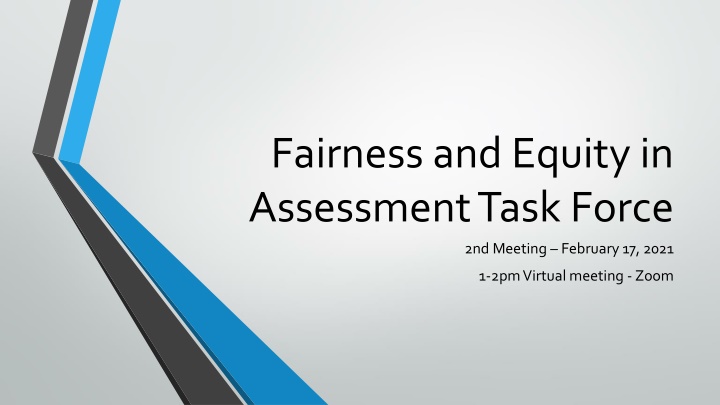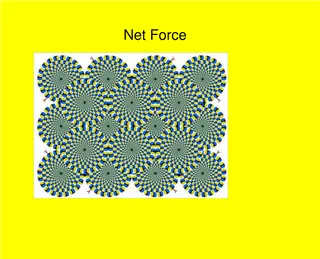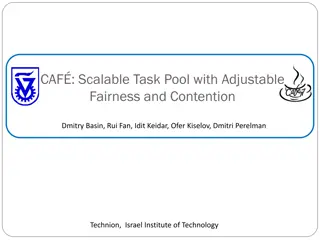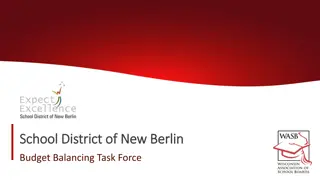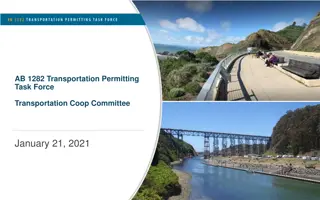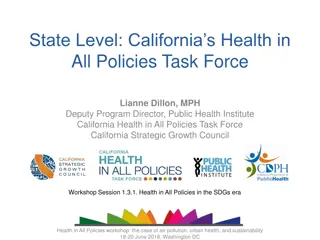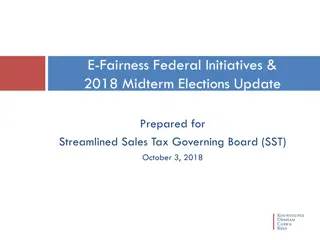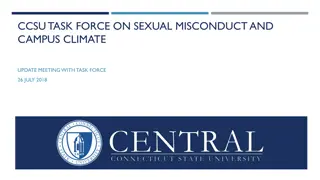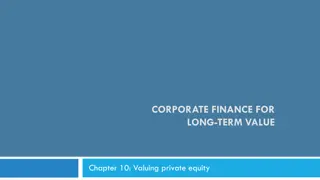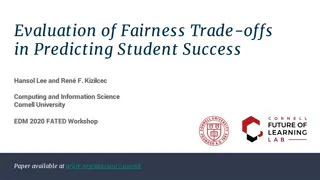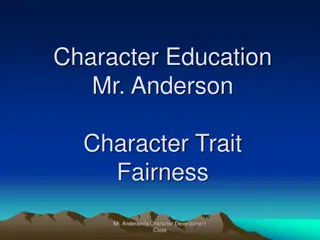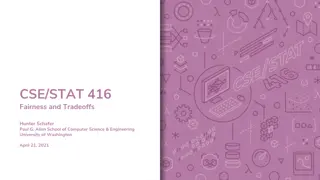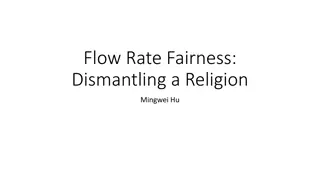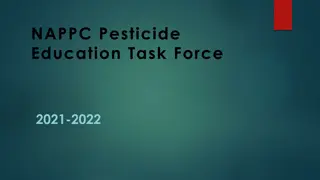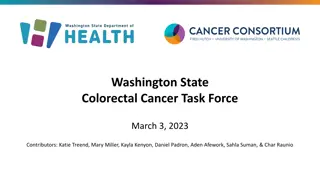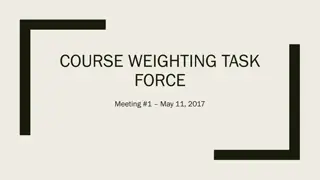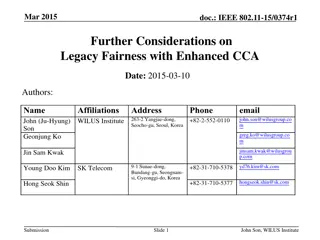Fairness and Equity in Assessment Task Force Meeting
Charged with establishing guidelines for fairness and equity in assessment practices at a university, the task force aims to address gaps and issues, identify strengths, and discuss ways to ensure a more inclusive and diverse assessment process. Through surveys, brainstorming sessions, and discussions, the task force seeks to improve assessment practices for faculty, instructors, staff, and administrators.
Download Presentation

Please find below an Image/Link to download the presentation.
The content on the website is provided AS IS for your information and personal use only. It may not be sold, licensed, or shared on other websites without obtaining consent from the author.If you encounter any issues during the download, it is possible that the publisher has removed the file from their server.
You are allowed to download the files provided on this website for personal or commercial use, subject to the condition that they are used lawfully. All files are the property of their respective owners.
The content on the website is provided AS IS for your information and personal use only. It may not be sold, licensed, or shared on other websites without obtaining consent from the author.
E N D
Presentation Transcript
Fairness and Equity in Assessment Task Force 2nd Meeting February 17, 2021 1-2pmVirtual meeting -Zoom
Survey Responses Themes UF s Fairness and Equity in assessment Strengths UF s Fairness and Equity in assessment Gaps and Issues Taskforce Brainstorming Discussion Agenda What do we address at UF? Questions Disperse to guidelines or Model development groups
The Task Force is charged with establishing a set of guidelines for UF faculty, instructors, staff, and administrators to help ensure fairness and equity in assessment in all contexts at the university. The guidelines must address fairness and equity in the entire assessment process, including development, opportunity to learn, administration, scoring, score interpretations, and the evaluation of the measurement properties of the assessment. The Charge
What practices, procedures or policies currently reflect fairness and equitable assessment practices at UF? STRENGTHS
UFs STRENGTHS Center for Teaching Excellence Faculty support ( CTE) Accommodations and DRC Support Reconsiderations on the use of Standardized Tests in admissions-GRE Diversity, Equity and Inclusion ( DEI) Training Academic integrity awareness campaigns Recent attention to a welcoming environment to encourage diverse hires Recent efforts in evaluating how assessment score and cut scores are calculated Attempts at moving away from highly quantitative measures to predict potential student success Greater attention overall on issues of diversity, equity and inclusion among the members of the university
UFs FAIRNESS AND EQUITY IN ASSESSMENT STRENGTHS Taskforce Discussion & Questions
UFs FAIRNESS AND EQUITY IN ASSESSMENT GAPS AND ISSUES
FAIRNESS AND EQUITY IN ASSESSMENT GAPS Heavy use of student evaluations for faculty decisions, with biases in such evaluations for faculty of color and women Emphasis on standardized tests for student admissions with uniform requirements across colleges, despite knowing that such test scores can be influenced by lack of access to resources-e.g. GRE Internal research assessments (e.g., for SEED funds) lacking transparency and fairness for faculty, which is particularly problematic when underrepresented faculty rarely receive these funds Biases toward students, staff, and faculty of color that range from BIPOC physicians and faculty being mistaken for custodial staff and Black students being less likely to receive A grades even when controlling for performance factors Inconsistent grading and assignments in and across UF classrooms and programs, with some units finding evidence of bias against black students in course grades Inadequate faculty training in assessment and fairness Lack of time for instructors to develop and evaluate assessments
FAIRNESS AND EQUITY IN ASSESSMENT GAPS Disparities in technology use and access that affect student differently based on their financial status and living arrangements Disparities in assessment administration conditions (e.g., student home environment differences; issues in using proctoring services under different assessment conditions) Balancing the need for uniform grading of students with the desire for assessment of higher-level constructs Barriers in classroom assessment for students with English as a second language Lack of transparency in assessments Lack of diverse reviewers of student work, leaving the work of underrepresented students being evaluated by reviewers from the dominant culture Reliance on external board exams /licensure by some programs/colleges leaving little room to address equity and fairness issues on final assessments
UFs FAIRNESS AND EQUITY IN ASSESSMENT GAPS STAFF Are our staff s assessment practices, procedures and policies fair and equitable? Teams Employees Academic advisors Administrative assistants Program assistants Fiscal offices staff Research assistants IT All other staff members at UF
UFs FAIRNESS AND EQUITY IN ASSESSMENT STAFF Taskforce Discussion & Questions
UFs FAIRNESS AND EQUITY IN ASSESSMENT GAPS Possible Solutions
UFs FAIRNESS AND EQUITY IN ASSESSMENT Possible solutions Professional development (with incentives) on implicit bias in assessment Campus resource for designing and evaluating fair assessments (similar to educational technology resources on campus) Improvement in peer observations of teaching, to include assessment reviews Requirements for summaries of assessment practices/approaches in teaching statements (e.g., teaching statements used for tenure and promotion Policy implementations (with accompanied professional development)
UFs FAIRNESS AND EQUITY IN ASSESSMENT GAPS Taskforce Discussion & Questions
Guideline Development Group Feb 25th2-3pm Work with David Miller and Teresa Mutahi to develop the guidelines and review the recommendations from the model development group, and where mutually agreeable, implement the recommendations to modify the guidelines. Groups Next Meeting Model Development Group Feb 24th8-9am Work with Corinne Huggins-Manley to locate and develop models that operationalize the guidelines in various contexts; provide the guideline development group with modifications to increase their utility.
UFs FAIRNESS AND EQUITY IN ASSESSMENT GAPS Model & Resources Suggestions (For respective groups )
UF FAIRNESS AND EQUITY IN ASSESSMENT SUGGESTIONS Frameworks Developmental Model of Intercultural Sensitivity (DMIS) - Milton Bennett https://www.idrinstitute.org/dmis/ Intercultural Development Continuum (IDC) - Mitchell Hammer https://idiinventory.com/generalinformation/the-intercultural-development-continuum-idc/ The Transparency in Learning and Teaching (TILT) project (https://tilthighered.com/) which has a framework for presenting assignment instructions to clarify Purpose, Task, and Criteria as well as transparency methods for improving learning Guidelines for Assessment and Instruction in Statistics Education (GAISE) framework, which highlights some useful concepts for assessing statistical thinking. While this is a fairly specific and targeted document, it may provide some useful insight into creating fair and equitable assessments in general (https://www.amstat.org/asa/files/pdfs/GAISE/GaiseCollege_Full.pdf).
UF FAIRNESS AND EQUITY IN ASSESSMENT SUGGESTIONS Articles CAST (2020).UDL Tips for Assessment. Wakefield, MA: Author.Retrieved from http://www.cast.org/publications/2020/udl-tips-assessmentshttp://udlresource.ca/2017/12/assessment/ McNair, T. B.; Veras, J. (2017, Spring). Committing to equity and inclusive excellences. Peer Review, 19(2). Entire issue. Retrieved from: https://www.aacu.org/peerreview/2017/Spring Montenegro, E. & Jankowski, N. A. (2020, January).A new decade for assessment: Embedding equity into assessment praxis. Retrieved from: https://www.learningoutcomesassessment.org/wp- content/uploads/2020/01/A-New-Decade-for-Assessment.pdf Joint Committee on Standards for Educational Evaluation. The Evaluation Center of Western Michigan University: Kalamazoo. Retrieved from https://evaluationstandards.org/ Perdomo J., Tolliver D., Hsu H., He Y., Nash K.A., DonatelliS., Mateo C., AkagbosuC., Alizadeh F., Power- Hays A., Rainer T., Zheng D.J., KistinC.J., Vinci R.J., Michelson C.D. (2019, November 25). Health Equity Rounds: An Interdisciplinary Case Conference to Address Implicit Bias and Structural Racism for Faculty and Trainees. (n.d.). MedEdPORTAL: The AAMC Journal of teaching and Learning Resources. Retrieved from https://www.mededportal.org/doi/abs/10.15766/mep_2374-8265.10858 doi: 10.15766/mep_2374- 8265.10858. PMID: 32166114; PMCID: PMC7050660. Sherman, M. D., Ricco J , Nelson S C., Nezhad S.J. , Prasad S. Implicit bias training in a residency program: Aiming for enduring effects. Fam Med. 2019 Sep;51(8):677-681. doi: 10.22454/FamMed.2019.947255. PMID: 31509218 Mintz, S. (2019, December 9). Can technology make grading fairer and more efficient? Retrieved from https://www.insidehighered.com/blogs/higher-ed-gamma/can-technology-make-grading-fairer-and-more- efficient
UF FAIRNESS AND EQUITY ASSESSMENT MODEL SUGGESTIONS Models that use college-basedassessment committees to hold people accountable to basic principles of fair testing Models that incorporate course and assessment alignment Models from other institutions implementing best practices in this area Models from programs/units within UF that are implementing or trying to implement best practices in this area Models incorporating the Universal Design for Learning framework Models for building test banks of high-quality items that are feasible to implement for busy faculty and instructors Models that hire staff to support assessment (e.g., proctoring, administering, scoring) Models that shift away from high-stakes testing toward authentic assessment Models that include technology that facilitates assessment Models that include statements on plagiarism detection tools Models imbedded within larger university/college plans that address diversity and inclusion
